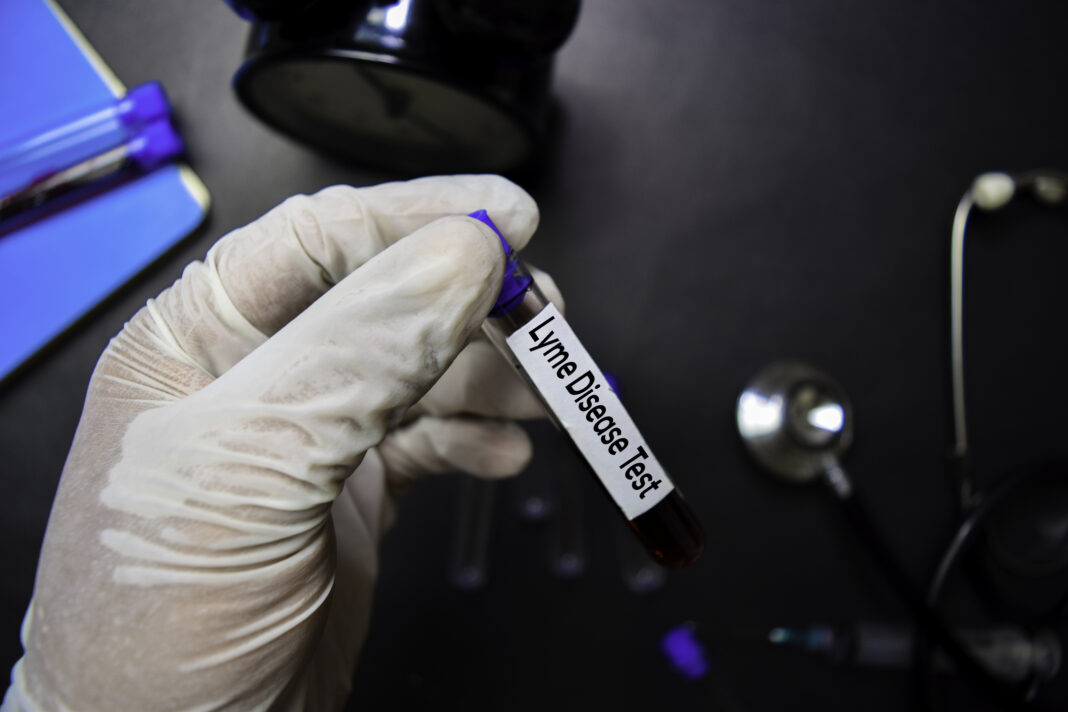Diagnosing Lyme disease currently involves a two-step testing process. Unfortunately, it’s an imperfect process that can produce unreliable results in too many cases. What’s needed is a simplified, more accurate test. It’s a solution being studied by Richard Porwancher, M.D., Director of the St. Francis Medical Center Lyme Disease Center.

In a recent peer-reviewed article published online by the Public Library of Science (PLoS ONE), Dr. Porwancher and co-author, Lisa Landsberg, M.Ed., shared their “proof-of-concept” analysis of a single test called the multi-antibody kinetic EIA. This test was developed by the Centers for Disease Control and Prevention but is not yet commercially available. Dr. Porwancher’s analysis of patient antibody samples showed that the single test was significantly more accurate for Lyme disease diagnosis than current methods.
The Lyme Disease Center at St. Francis is a referral clinic that manages some of the most difficult cases. “Probably half the patients I see at the St. Francis Lyme Disease Clinic have had a positive test for Lyme disease due to laboratory error, such as a false-positive, or other medical conditions,” says Dr. Porwancher. “This new test has the potential to improve our ability to quickly and correctly diagnosis Lyme disease.”
Currently, a positive screening test is routinely confirmed by a second test, often a Western blot, making diagnosis a lengthier and more costly two-step process. This two-step testing process picks up early Lyme disease about 40-45% of the time and later-stage Lyme disease at least 90% of the time, according to Dr. Porwancher. The new test can detect up to 20% more early cases with only 1% false-positive test results.
“We are missing a lot of people who initially test negative for Lyme but actually have the disease, as well as the reverse, over-diagnosis of people with other medical conditions that confuse Lyme disease tests. The study results provide a framework for improved decision making in a single step, saving time and expense.”
The early symptoms of Lyme Disease can include fever, chills, fatigue, muscle and joint pain, as well as a rash. These symptoms are often similar to other diseases or medical conditions.
Lyme disease is a growing problem in the US. The Centers for Disease Control and Prevention estimates that nearly half a million people may get the disease each year. Dr. Porwancher notes that not all cases are reported and, as mentioned, some are missed or over-diagnosed due to testing errors.
It is important to diagnose and treat Lyme disease in its early stages when it can be cured with antibiotics. If left untreated, the disease can develop into a chronic illness that leads to long-term, serious health problems.
“The study results are exciting because it shows we can get more mileage out of the technology that exists now,” said Dr. Porwancher. “It’s a valuable tool that provides physicians with guidance and a framework for test interpretation in a single step, versus multiple stages” said Dr. Porwancher.
For more information about the Lyme Disease Center at St. Francis, or Dr. Porwancher, please visit https://www.stfrancismedical.org/find-a-service-or-specialty/lyme-disease-center.





